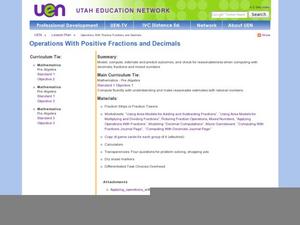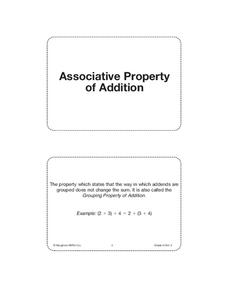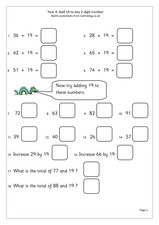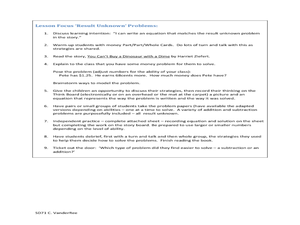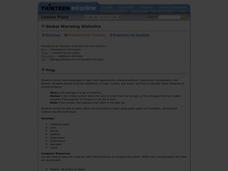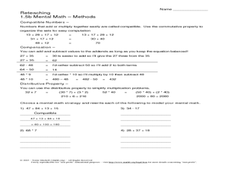Curated OER
Compatible Numbers To Ten
Students solve both addition and subtraction facts and discover the relationship between adding and subtracting equations. Students read real life word problems, extrapolate needed information, and write equations to solve the story...
Granite School District
Activities that Build Number Sense
Have fun while building the number sense of young mathematicians with this list of ten-frame learning games. From developing cardinality and counting skills to learning place value and basic addition strategies, ten-frames are excellent...
Curated OER
Operations with Positive Fractions and Decimals
Explore the concept of fractions and decimals! In this fractions and decimals lesson, pupils use fraction tiles to express fractions. They play a fraction review basketball game where when a team gets a question correct they get to shoot...
Houghton Mifflin Harcourt
Unit 2 Math Vocabulary Cards (Grade 3)
A set of third grade math vocabulary cards include topics that range from addition properties to terms like estimate and fact family. Each sheet has two cards on it. The top half is the word printed in bold text, while the bottom is the...
Curated OER
Place Value Practice (Tenths)
Students practice strategies solving problems with basic facts, framework, domain and early additive part-whole. They recall the compatible numbers to ten, solve problems with small numbers using a part-whole strategy and recall ten and...
Curated OER
Add 19 to Any 2-Digit Number
In this addition worksheet, learners solve 18 problems in which the number 19 is added to a two-digit number. No hints or examples are provided.
Curated OER
Add & Subtract Fractions w/Unlike Denominators, 2
Students use several examples to create a method for adding and subtracting fractions with unlike denominators. They present these methods to the class and then practice applying methods to sample problems.
Curated OER
Addition and Subtraction Pick n Mix 2
Fourth graders practice a wide range of strategies for solving addition and subtraction problems containing decimal fractions. They add and subtract fractions, decimals and integers while generalizing the properties of operations with...
Curated OER
Book Title: You Can’t Buy a Dinosaur with a Dime
Students explore the concepts of multiple digit addition and subtraction. In this addition and subtraction lesson, students read the book You Can’t Buy a Dinosaur with a Dime and then discuss methods for solving a particular math problem...
Curated OER
Adding and Subtracting Decimals
The addition and subtraction of decimals is a relatively simple process. The most important thing to remember is to have all of the decimal points lined up. This presentation gives that strategy, plus some others to use when performing...
Curated OER
Global Warming Statistics
Young scholars research and collect data regarding temperature changes for a specific location and find the mean, median, and mode for their data. For this climate change lesson, students choose a location to research and collect data...
Curated OER
Mental Math Methods
In this mental math worksheet, students use mental math methods to solve problems. Students complete 1 addition, 1 multiplication, and 1 subtraction problem using these methods.
Curated OER
Perimeter
In this math worksheet, students learn how to find the perimeter of a polygon. Students read the information and answer 6 questions in which the perimeter of figures is calculated.
Curated OER
Mental Math: Use the Properties-Reteach
For this mental math reteach worksheet, students review the commutative, associative and distributive properties, then complete a set of 13 problems. A reference web site is given for additional activities.




